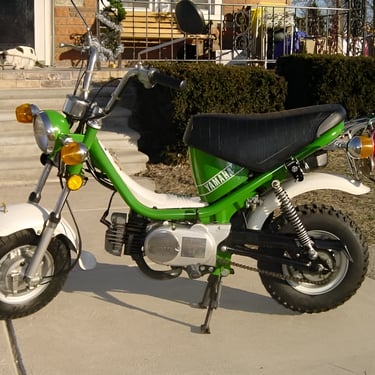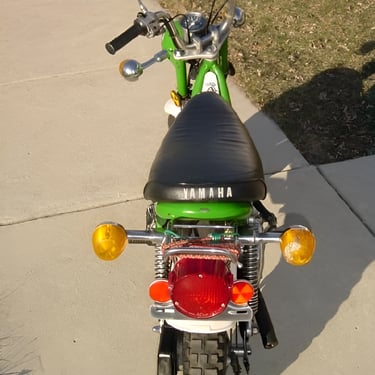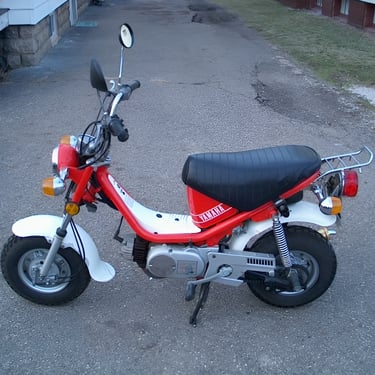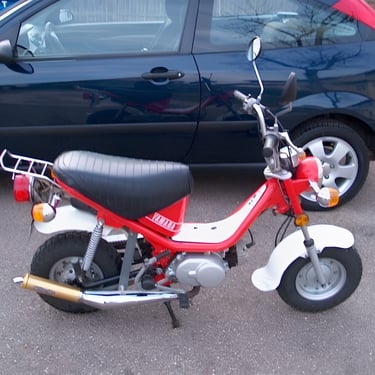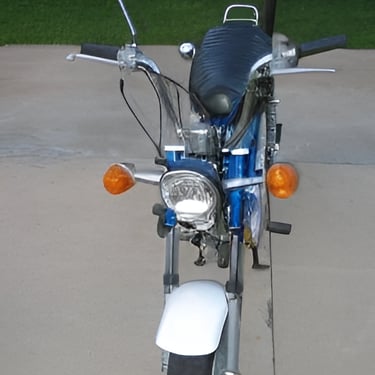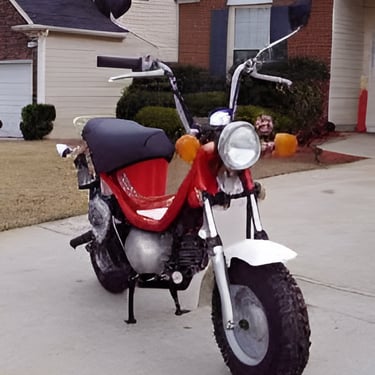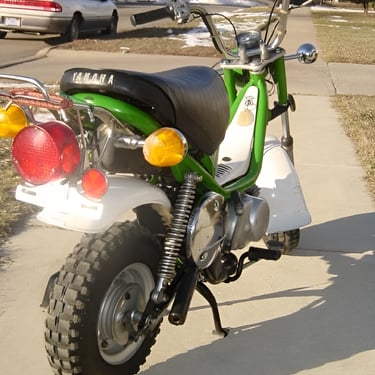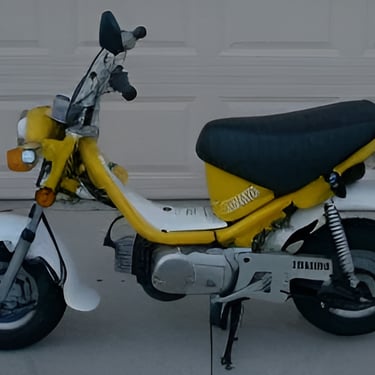1973 Yamaha Chappy (LB50II): A Much Beloved Mini-Bike Marvel
The 1973 Yamaha Chappy LB50II was a mini-bike designed for urban riders in Japan, catering to women in bustling cities. It featured small 8-inch tires and a 2-speed automatic transmission, making it accessible and manageable for a wide range of riders. Yamaha also offered a hand-clutch 4-speed model and a centrifugal clutch 3-speed model, expanding the Chappy family and giving riders options that suited their preferences and riding styles. Powering the Chappy was a modest yet capable air-cooled, 2-stroke, single-cylinder engine with a displacement of 49cm³. Its user-friendliness and adaptability made it an ideal choice for city dwellers who needed a nimble and reliable means of transportation. The Chappy continues to be remembered fondly as a mini-bike marvel with an enduring charm.
SCOOTERS OFF ROAD MOPEDSYAMAHA JAPAN 1970'SMINI-BIKES
11/6/20232 min read
1973 Yamaha Chappy (LB50II): A Much Beloved Mini-Bike Marvel
In 1973, Yamaha introduced a remarkable two-wheeled marvel designed primarily for urban riders in Japan, and it went by the name "Chappy." This diminutive yet charming mini-bike, officially known as the Yamaha Chappy LB50II, was a game-changer in the world of around-town transportation. Designed with a clear focus on providing a user-friendly and accessible riding experience, the Chappy quickly became a beloved and long-selling model, earning a special place in the hearts of riders.
Catering to Urban Riders: A Design for All
The Yamaha Chappy was created with a specific audience in mind—women in Japan's bustling cities. Yamaha recognized the need for a motorcycle that was easy to handle and mount, especially for riders of smaller stature. To address this, the Chappy featured small 8-inch tires, making it more accessible and manageable for a wide range of riders.
One of the standout features of the Chappy was its 2-speed automatic transmission. This innovation simplified the riding experience, especially for those who were new to motorcycling or seeking an effortless and stress-free mode of transportation.
A Versatile Lineup: More Than One Way to Chappy
Yamaha was committed to providing choices to its customers, and the Chappy lineup reflected this commitment. While the 2-speed automatic transmission version was the flagship model, Yamaha also offered a hand-clutch 4-speed model for those who wanted more control over gear changes. Additionally, a centrifugal clutch 3-speed model was introduced, further expanding the Chappy family and giving riders options that suited their preferences and riding styles.
The Chappy's user-friendliness and adaptability made it an ideal choice for city dwellers who needed a nimble and reliable means of transportation. Whether it was for daily commuting, running errands, or simply enjoying a leisurely ride around town, the Chappy proved itself as a versatile companion.
An Air-Cooled Powerplant
Powering the Chappy was a modest yet capable air-cooled, 2-stroke, single-cylinder engine with a displacement of 49cm³. It produced a maximum power output of 2.6kW (3.5PS) at 5,000 rpm, delivering sufficient performance for the urban environment. The engine's maximum torque was 5.4N·m (0.55kgf·m) at 4,000 rpm, providing a healthy dose of low-end grunt for efficient city riding.
A Lasting Legacy
The 1973 Yamaha Chappy (LB50II) became a beloved mini-bike for around-town use that could be ridden by anyone. Its enduring popularity and reputation for user-friendliness are testaments to its legacy. The Chappy captured the hearts of riders who sought a practical and enjoyable means of getting around town, and it continues to be remembered fondly as a mini-bike marvel with an enduring charm. Yamaha's commitment to providing accessible and versatile motorcycles found a perfect embodiment in the Chappy, making it a standout in the world of urban mobility.
